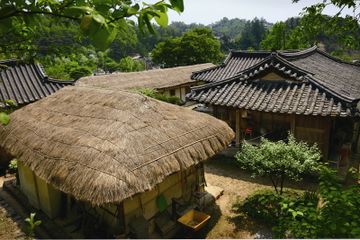"청주 이항희 가옥"의 두 판 사이의 차이
| 56번째 줄: | 56번째 줄: | ||
File:YiHangHui_newboard.jpg|[http://blog.naver.com/459745/220621547126 신설 안내판] | File:YiHangHui_newboard.jpg|[http://blog.naver.com/459745/220621547126 신설 안내판] | ||
</gallery> | </gallery> | ||
| + | |||
| + | |||
| + | =='''Semantic Data'''== | ||
| + | |||
| + | ===Semantic Network Visualization=== | ||
| + | {{NetworkGraph | title=청주_고은리_고택.lst}} | ||
| + | |||
| + | ===Identified Individuals=== | ||
| + | |||
| + | {|class="wikitable" style="text-align:left" | ||
| + | !style="width:150px"| id ||style="width:100px"|class||style="width:300px"|label || infoUrl || iconUrl | ||
| + | |- | ||
| + | |} | ||
| + | |||
| + | ===RDF Triples=== | ||
| + | {|class="wikitable" style="text-align:left" | ||
| + | !style="width:150px"| source ||style="width:150px"| target ||style="width:150px"| relation | ||
| + | |- | ||
| + | |} | ||
| + | |||
| + | ===Spatial Data=== | ||
| + | {|class="wikitable" style="text-align:left" | ||
| + | !style="width:200px"| gId ||style="width:50px"| type ||style="width:260px"| label ||style="width:100px"| id ||style="width:100px"| hanja ||style="width:100px"| latitude || style="width:100px"| longitude || address | ||
| + | |- | ||
| + | |} | ||
| + | |||
| + | ===Timeline Data=== | ||
| + | {|class="wikitable" style="text-align:left" | ||
| + | !style="width:200px"| sid ||style="width:50px"| type ||style="width:90px"| indexYear ||style="width:160px"| label ||style="width:100px"| id ||style="width:100px"| hanja || style="width:100px"|solarDate ||style="width:100px"| lunarDate || timeType | ||
| + | |- | ||
| + | |} | ||
| + | |||
| + | ===English Terms=== | ||
| + | {|class="wikitable" style="text-align:left" | ||
| + | ! termSource || korTerm || chiTerm || engTerm || definition | ||
| + | |- | ||
| + | |} | ||
| + | |||
| + | |||
==주석== | ==주석== | ||
2019년 12월 24일 (화) 14:31 판
- 청주 고은리 고택(淸州 高隱里 古宅)으로 지정명칭이 변경됨.(2017년 2월 23일 문화재청고시 제2017-32호)
| 청주 이항희 가옥 Yi Hang-hui’s House, Cheongju |
|
| 대표명칭 | 청주 이항희 가옥 |
|---|---|
| 영문명칭 | Yi Hang-hui’s House, Cheongju |
| 한자 | 淸州 李恒熙 家屋 |
| 주소 | 충청북도 청주시 상당구 남일면 고은리 190-1 |
| 지정번호 | 국가민속문화재 제133호 |
| 지정일 | 1984년 1월 14일 |
| 분류 | 유적건조물/주거생활/주거건축/가옥 |
| 시대 | 조선시대 |
| 수량/면적 | 1필지/5,497㎡ |
| 웹사이트 | 문화재청 국가문화유산포털 |
|
|
|
목차
해설문
국문
이 가옥은 1861년(철종,哲宗 12)에 지은 안채와 20세기 중반에 지은 사랑채로 이루어진 전통 한옥이다.
이 집의 평면은 ㄱ자 모양의 안채와 그 앞의 -자 행랑채 및 동쪽의 곳간채, 서쪽의 광채를 크게 둘러싸고 있는 안 공간과 행랑채 동쪽에 배치된 사랑채로 이루어지는 바깥 공간으로 구성되어 있다.
이 집의 가장 큰 특징은 행랑채 동쪽 끝에 시설된 대문을 들어서면 가운데 마당에 이르고, 일각대문인 가운데 문을 거치면 안채에 이르는 외부 공간의 구성과 안마당의 모과나무·향나무, 뒤꼍의 감나무 등이 전통적 기법에 따라 배치된 점이다.
또한 안채의 건축 연대가 명확하고 건물 구조에 있어서 민가의 방식이 많이 쓰인 점도 주목된다.
영문
This hanok consists of a women’s quarters, a men’s quarters, a servants’ quarters, and storehouses.
The women’s quarters, built in 1861, remains, but the other parts of the house were reconstructed in the 1930s.
This house is unique in that the men’s quarters is to the right of, rather than inside, the main gate.
In the inner courtyard, quince and Chinese juniper trees were planted according to a traditional gardening style. }}
갤러리
안방[1]
Semantic Data
Semantic Network Visualization
Identified Individuals
| id | class | label | infoUrl | iconUrl |
|---|
RDF Triples
| source | target | relation |
|---|
Spatial Data
| gId | type | label | id | hanja | latitude | longitude | address |
|---|
Timeline Data
| sid | type | indexYear | label | id | hanja | solarDate | lunarDate | timeType |
|---|
English Terms
| termSource | korTerm | chiTerm | engTerm | definition |
|---|









